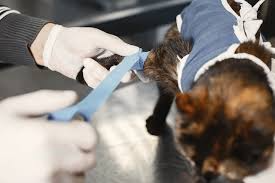It is painful to see your pet in pain or find that they are unable to walk. Mobility issues can take a serious toll on your pet’s quality of life. The positive aspect is that there is hope in veterinary orthopedic surgery. With modern medicine involved in animal healthcare, many dogs, cats, and even exotic pets can now easily walk, run, and play following the surgical process. This article will provide a closer look at how veterinary orthopedic surgery can assist your pets in recovering mobility and what precautions pet parents should follow before surgery.
What Is Orthopedic Surgery in Pets?
Pet orthopedic procedures are used to manage musculoskeletal problems involving the spine, joints, and limbs. Veterinarians often recommend it for conditions such as:
- Breaks or fractures
- Tears to the ligaments (such as ACL)
- Hip or elbow Dysplasia, Kneecaps (slips)
- Joint problems caused by arthritis (birth-related)
- Orthopedic issues
Such surgical procedures are designed to restore normal motion, alleviate pain, and prevent further degeneration, providing your pet with the opportunity to move comfortably.
When is Orthopedic Surgery Needed?
Not all minor injuries are treated by rest and medication, but some injuries are more severe and will require surgery. Here are common indicators that your dog or cat may benefit from veterinary orthopedic surgery:
- Difficulty sitting or lying down
- Stairs and jumping problems
- Inflammation or warmth of a joint
- Constant discomfort, cramps, complete or decreased movement
- Easy damage, such as a broken leg
Common Orthopedic Surgeries That Restore Mobility
Here are some of the most widespread orthopedic surgeries used to treat orthopedic problems and help get your pet’s strength back :
TPLO (Tibial Plate Leveling Osteotomy)
TPLO is a surgical procedure used to repair a torn cruciate ligament in dogs. The surgery significantly improves movement and comfort in large breeds, including labrador, retrievers, and german shepherds.
FHO (Femoral Head Ostectomy)
FHO surgery involves getting rid of the injured part of the ball in the hip joint. It is commonly performed on pets with hip dysplasia or serious fractures. Once healed, a false joint is developed, and pets recover with little to no pain.
Fracture Repair (Plates, Pins, and Screws)
Broken bones are treated by fixing the bone with surgical implants that are reproductions of metal plates or rods. These help the bones to heal properly in their proper position, enabling the pets to resume their standard lifestyles much earlier.
Joint Replacement (Hip Replacement)
Pets with extreme arthritis or dysplasia may also be ideal candidates for joint replacement surgery to regain a pain-free, functional joint once more.
Is Orthopedic Surgery Safe?
Orthopedic surgery is a very specialized area in veterinary medicine. Professional vet clinics perform it with the involvement of board-certified surgeons and offer the use of high-tech equipment, digital imaging, and sterile procedures.
Although any surgery is risky, the relief of pain, the ability to move again, and the improvement of the quality of life are usually worth the risk, particularly when your pet is in pain. Your vet will check:
- The general well-being of your pet
- Symptoms and behavioral changes
- Pre- and post-operative projected result
Final Thoughts
Veterinary orthopedic surgery is not simply a medical treatment. It ensures a peaceful life for pets with pain, stiffness, or trauma. A torn ligament, hip issue, and dislocated joint can be addressed and lead to normal movement and happiness with the help of the correct surgery.
In case your pet is experiencing difficulties when moving or appears to be suffering, do not hesitate. If you are unsure or confused about the symptoms, you can consult an experienced veterinarian regarding treatment options. British Veterinary Centre maintains high standards in providing animal healthcare and surgical facilities. As a leading vet clinic in the UAE, we are ready for any emergencies.
READ MORE : Why Strong Branding and Marketing Matter More Than Ever
